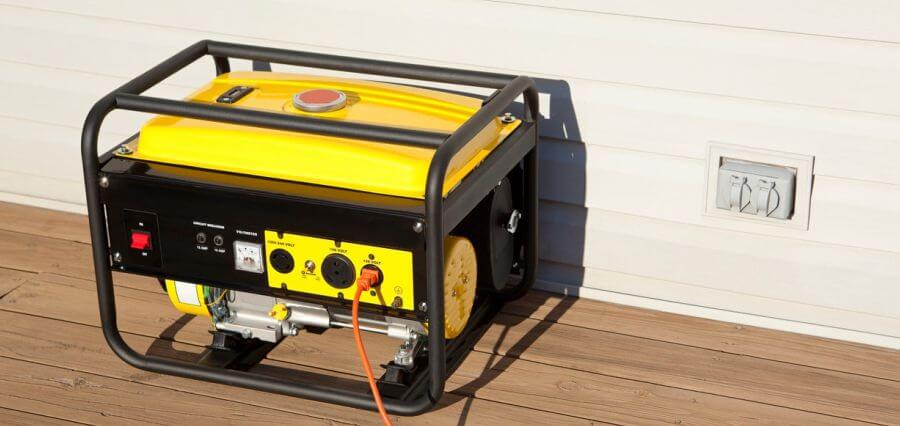Unpredictable power interruptions can disturb our daily routines, especially in the event of bad weather or unforeseen events. Many households are using home standby generators to lessen the hassle and guarantee an uninterrupted power supply. In this post, we’ll look at the advantages of buying a home standby generator, how it operates, things to think about before buying one, and usage and maintenance advice.
The Importance of a Home Standby Generator
Installing a home standby generator provides a dependable backup power source when the electricity is out. Unlike portable generators, which must be manually set up and fueled, they are permanently installed and turn on automatically when the primary power source is disrupted. In a storm, you won’t have to bother about manually starting the generator or fueling it.
- Continuous power supply: A backup generator can continuously power your home, ensuring that vital systems and appliances like lighting, heating and cooling, medical equipment, security systems, and refrigeration continue to function in the event of a power loss. This is especially important for houses with elderly residents, young children, or people who require continuous power due to medical conditions.
- Increased home value: Putting in a home standby generator can make your house worth more money. Homes with backup power systems are frequently attractive to purchasers because they provide security and convenience. If you ever decide to put your house on the market, it might be a great selling factor.
How do home standby generators work?
Home standby generators operate using a transfer switch system that connects to your home’s electrical panel. Here’s a simplified overview of how they work:
- Automatic detection: The transfer switch automatically detects a break in the main power supply and instructs the backup generator to start when there is a power loss.
- Power generation: The standby generator, fueled by natural gas or propane, starts generating electricity. The energy produced is sent through the transfer switch to the electrical panel, supplying power to your home.
- Restoration of power: Once the main power supply is restored, the transfer switch senses the return of utility power and safely transfers the electrical load back to the grid. The standby generator then goes into standby mode until the next power outage occurs.
Factors to Consider Before Purchasing a Home Standby Generator
Before investing in a home standby generator, consider the following factors:
- Power requirements: Assess your power needs and determine the size and capacity of the generator accordingly. Calculate the wattage required to run essential appliances and systems during an outage. A professional electrician can assist you in accurately assessing your power requirements.
- Fuel source: Home standby generators are typically powered by natural gas or propane. Consider the availability and cost of these fuel sources in your area. Natural gas is convenient as it is supplied through pipelines, while propane requires storage tanks.
- Installation and permits: Installing a home standby generator involves electrical work and compliance with local building codes. Ensure that you consult a licensed electrician for proper installation and acquire any necessary permits before proceeding.
- Maintenance and servicing: Like any machinery, home standby generators require regular maintenance to ensure optimal performance. Consider the maintenance requirements and servicing options offered by manufacturers or certified technicians in your area.
Tips for Proper Maintenance and Usage
To maximize the efficiency and lifespan of your home standby generator, follow these tips:
- Regular maintenance: adhere to the manufacturer’s recommended maintenance schedule, which typically includes oil and filter changes, spark plug inspections, and battery maintenance. Regular maintenance ensures that the generator is in good working condition when you need it.
- Test the generator: Periodically test your standby generator to ensure it starts and operates smoothly. Consult the user manual for specific instructions on how
to conduct a proper test. Typically, this involves simulating a power outage and monitoring the generator’s performance.
- Fuel management: Make sure you have enough propane on hand if your home standby generator runs on it. Keep an eye on the fuel levels and plan for refills as necessary. Fuel management is not a concern for generators running on natural gas because the fuel is delivered through pipelines.
- Keep the area clear: Make sure there is no debris, foliage, or other combustible objects near the generator. As a result, correct ventilation is maintained, and potential fire threats are avoided.
- Protect from the elements: Consider building a protective enclosure or generator cover if your generator is outdoors to protect it from inclement weather like torrential rain, snow, or scorching heat. This increases its lifespan and guarantees steady operation.
- Professional servicing: Contact a qualified expert for maintenance if you experience any problems with your home standby generator or suspect that there may be a problem. Without the necessary training and experience, making repairs or modifications can be risky and may void the warranty.
Conclusion
Homeowners can have a dependable and practical backup power source during emergencies and power outages by purchasing a home standby generator. You can create a cozy and secure living environment by making sure that important systems and appliances have a constant power supply. Before investing in a home backup generator, it is essential to carefully evaluate aspects like power requirements, fuel source, installation, and maintenance. A home backup generator may provide you peace of mind and guarantee that you are ready for any unforeseen power outages with appropriate installation, routine maintenance, and adherence to safety rules.









